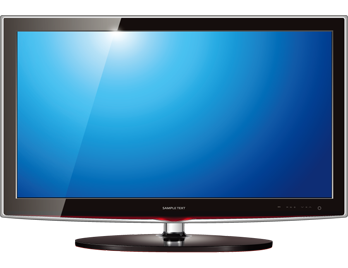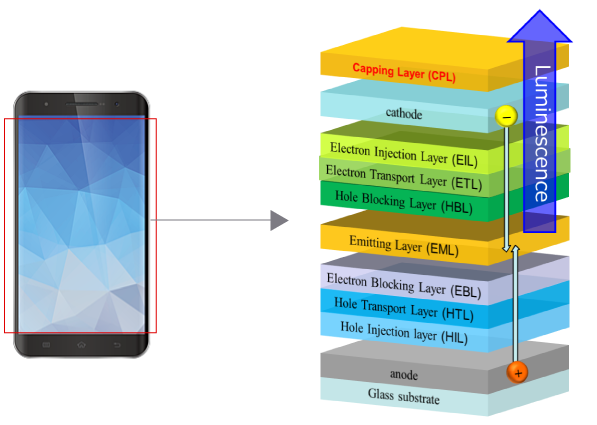These days, OLED display technology is gaining more and more attention. Our group has been working on the development of OLED materials for more than 20 years. This flat panel is extremely thin and light, that achieves excellent color reproduction and a flexible shape, and is seen as a clear departure from both LCD and plasma display technologies.
Hodogaya Chemical has developed Hole Transport Materials (HTM) and Electron Transport Materials (ETM) for OLED applications using our long experience in synthesis technologies, including ultrapure organic chemicals such as Organic Photo Conductor (Charge Transport Materials), as well as computer-based molecule design technology. Other OLED materials such as Emitting Materials and Hole Injection Materials are under development.
Our unique OLED materials will help to extend the life and stability of OLED devices. We are also working on the development of Capping layer materials(CPL) that achieves high and low refractive index by utilizing optical simulation technology.
As a leading manufacturer of OLED materials, the Hodogaya Chemical group supplies materials to major panel manufacturers both in Japan and overseas.

Smart Phone

OLED TV
Basic Principles of OLED Technology
‘EL’ stands for electroluminescence, which is a light emitting system featuring organic compounds that emit light when electric current is applied.
An OLED display is a laminated construction, which consists of three layers, namely a hole transport layer (HTL), an emitting layer (EML) and an electron transport layer (ETL). The HTL transports holes (plus), the ETL transports electrons (minus), and the holes and electrons are brought into the EML, and combined to emit light.
OLED System

Core technologies and strengths of the Hodogaya Chemical Group
Hodogaya Chemical manufactures mainly Hole Transport Materials (HTM) that are used in the hole transport layer. HTM technology is based on Charge Transport Materials (CTM) which were developed for electrophotography and printers.
We have the advantage of being able to provide distinctive OLED materials through the synergy between Hodogaya Chemical’s strengths in HTM and the Light Emitting Materials developed and manufactured by our Korean group company SFC.
We are also developing Electron Transport Materials (ETM) used in electron transport layers, and Capping layer materials(CPL). From dyestuffs to imaging materials, and from imaging materials to OLED materials, Hodogaya Chemical is charting its course along with the flow of the times.
*Charge Transport Materials (CTM): Materials for the Organic Photo Conductor (OPC) drums that are a key component of electrophotographic copiers and printers.
Subsidiary: SFC CO.,LTD. HODOGAYA CHEMICAL KOREA CO.,LTD.